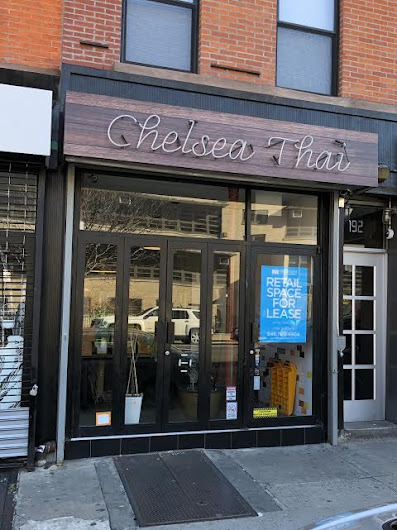
There's probably a good reason why there's a discarded figure made from cupcakes, cookies, brownies and doughnuts on 10th Street near Second Avenue this afternoon.
Photo by Lola Saénz ...

The magazine’s slogan was "We Cover All the Arts" and the monthly featured art, music, literature, dance, fashion, performance, and theater in every issue. Later issues also contained stories about the community garden struggles.
Most of the staff and production team was recruited by publisher and editor Jeffrey Cyphers Wright, from his literary and artistic contacts in the East Village. The 64-page monthly journal circulated nationally until 2000, and the complete set of Cover issues are archived at NYU Fales Library and at MoMA.
Local heroes were touted, often before receiving mainstream attention. Penny Arcade, Colette, Eileen Myles, and Afrika Bambaataa were all part of featured cover stories. The magazine often broke new talent: for instance, the iconoclastic fine artist Andres Serrano received his first cover story in Cover.







“Eighty East Tenth Street sits at the heart of a historically significant stretch of Fourth Avenue formerly known as Book Row, once the center of the rare and antique book trade in America. Inspired by this unique history, NAVA began an intensive creative process of transforming and expressing the written word into a physical pattern on the building’s façade. The resulting metal surface features a circular grid pattern of discreet concave and convex impressions which make each panel a distinct manifestation of the neighborhood's rich heritage.”





"The smell came Friday. There was a large industrial black trash bag that was leaking vomit. It was terrible and stunk up the whole block all weekend."
"Now it appears the trash bag has disappeared and all that is left is an industrial amount of vomit."






The wings are marinated in either soy garlic or hot and spicy sauce, both of which were tasty. You can also order drumsticks or chicken strips in the same marinades. The Kimchi cole slaw had a nice kick, as expected. Other Korean dishes like mandu (dumplings) and pa-jeon (scallion pancakes with seafood) are also on the menu...




An investigator for Chang scoped out one of Adler’s August events and found a bouncer at the door, a bar on the rooftop and naked partygoers throughout the home, the landlord claims in his filing.
On the first floor, he noted, “a naked man who sat on a swing was being spanked by two women clad in lingerie.”
Another area featured mattresses on the floor and two naked women sitting on a couch, Wang said.
Sangria was going for $8 a cup, while the marijuana cookies were $15.
The parties have resulted in multiple complaints from neighbors about the noise, visits from cops and violations for garbage piled up outside, said Chang, who alleges that Adler’s illicit use of the property could damage Chang’s reputation and that of the building.

Upon entering this beautiful townhouse, there are 22-foot-high ceilings. Located on the first floor is a Poggenpohls custom chefs kitchen with custom Statutori marble countertops. The kitchen offers a fully marble covered island, along with a Six Burner Wolf Range, Miele Dishwasher, Viking Fridge and modernized ez-touch cabinets.
The 2nd floor is an open library and living room. The 3rd floor presents a one-of-a-kind open master suite layout with a separate standing shower on a class of its own. The vanities are a combination of top pieces from Ferguson, Kohler, and Restoration Hardware. The 4th floor presents two additional bedrooms, each personalized with their own all-marbled bathrooms and Porcelanosa vanities. At the top of the home lies a private oasis, roof decked in custom Runnen Tiles, along with a Calcutta Stone front ledge and Statutori back ledge.




To call Mr. Mackie, 61, a dying breed is probably an exaggeration, but maybe not here. Nestled between Avenues C and D in the East Village of Manhattan, his motorcycle garage, Sixth Street Specials, is among the last in the borough, a vestige of a neighborhood that scarcely resembles its past — and of an iron-horse culture that the city seems determined to throttle.
There used to be more places like this in Manhattan: four or five in the East Village, Mr. Mackie guessed, and maybe a dozen more farther downtown. Now they’re in North Brooklyn. Some resemble fashion boutiques, tailored to the tastes and money of upwardly mobile guys who want the glamour but not the grease.






